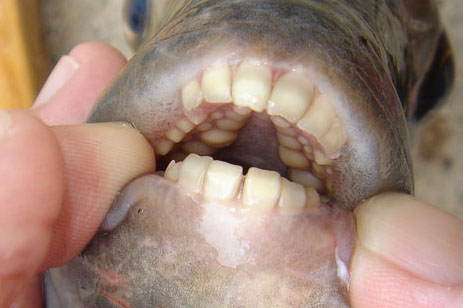Everything you wanted to know about how whale sharks feed
 Thursday, September 23, 2010 at 2:20PM
Thursday, September 23, 2010 at 2:20PM I’m really excited about a new paper that’s finally out about how whale sharks feed, from the way their filter pads are built to what they eat and how much. I’m not an author on the paper but I’ve been a witness to a lot of the work and its terrific to see it come to fruition. So who’s it by and what’s it about?
Phil Motta is the senior author, with 11 co-authors from Georgia Aquarium, Mote marine lab, Project DOMINO and the University of California. Eleven seems like a lot of co-authors, but it’s a very comprehensive and very broad ranging look at feeding in the worlds largest fish.

First the what. Many folks are aware that whale sharks are filter feeders, meaning that they swim the worlds oceans sieving tiny food particles from the water. That much was fairly obvious from their enormous mouths and 20 filter pads that are visible inside. What wasn’t known was exactly what they eat and how much, especially relative to how much energy they spend, a balancing act we can call the energy budget. For the first time, Phil and his colleagues were able to measure the size of the whale sharks mouth, how much time they spend with it open and the speed at which they swim, and from that the amount of water that they filter in an average day. By combining that with measurements of plankton density in the coastal waters of Mexico where whale sharks gather and nutritional analyses of samples taken there, they worked out how much whale sharks eat in that natural setting. The answer: between 1.5 and 2.7 kg (3-6lbs) an hour, scaling up to between 15 and 30,000 kilocalories a day (up to 125,000 kilojoules). Not surprisingly, the amount of plankton in the water was higher where whale sharks were eating than where they were not, mostly due to calanoid copepods and sergestid shrimps (one of which, with the cool genus name of Lucifer, is illustrated below). That could mean whale sharks really like those items, or just that they really like dense patches of food, and those ones just happened to be shrimps and copepods. Or it could be both.

Some of the coolest stuff in the paper, though, is about HOW whale sharks feed. They filter, yes, but not like baleen whales and not like other filter-feeding fishes. A baleen whale takes a huge mouthful of water and then squeezes it out through their baleen combs, which trap the food items, like pasta gets caught in a colander. Thats a perpendicular or dead-head filter, and the problem with those is that they have to be backflushed from time to time to blow the particles off the screen (left panel below). In whale sharks, on the other hand (right panel below), water flows mostly parallel to the filter surface, only deviating slightly to dip across the filter surface and siphon out through the gills. Food particles, which have more momentum, don’t get trapped on the filter but carry on to the back of the mouth, forming an ever more concentrated ball of food. This is the same principle behind plankton nets and its very efficient because the filter doesn’t clog up with particles the way a baleen plate (or standard kitchen colander) would, and it rarely needs backflushing.

Its an ingenious system, illustrated nicely in the figure above from Elizabeth Brainerd’s 2001 paper in Nature.
I could go on all day about whale sharks and their feeding, or you can skip the middle man and go get the PDF of Phil’s paper here. Its well worth a read; there are some great images and a far more interesting and detailed discussion than the precis I have here. Check it out. You can learn more about Georgia Aquarium whale shark research from the tag list on the left, or by going here.
Motta, P., Maslanka, M., Hueter, R., Davis, R., de la Parra, R., Mulvany, S., Habegger, M., Strother, J., Mara, K., & Gardiner, J. (2010). Feeding anatomy, filter-feeding rate, and diet of whale sharks Rhincodon typus during surface ram filter feeding off the Yucatan Peninsula, Mexico Zoology DOI: 10.1016/j.zool.2009.12.001
Brainerd, E. (2001). Caught in the Crossflow Nature, 412 (6845), 387-388 DOI: 10.1038/35086666
 1 Comment |
1 Comment |  Email Article | tagged
Email Article | tagged  Georgia Aquarium,
Georgia Aquarium,  anatomy,
anatomy,  filter feeding,
filter feeding,  plankton,
plankton,  whale sharks
whale sharks 

